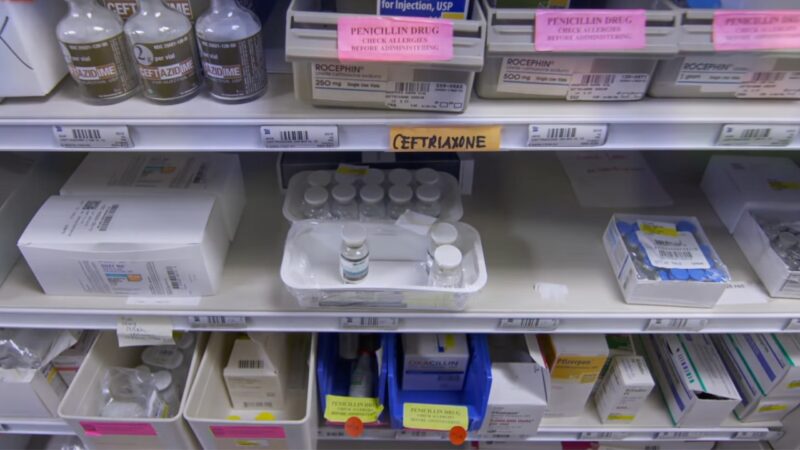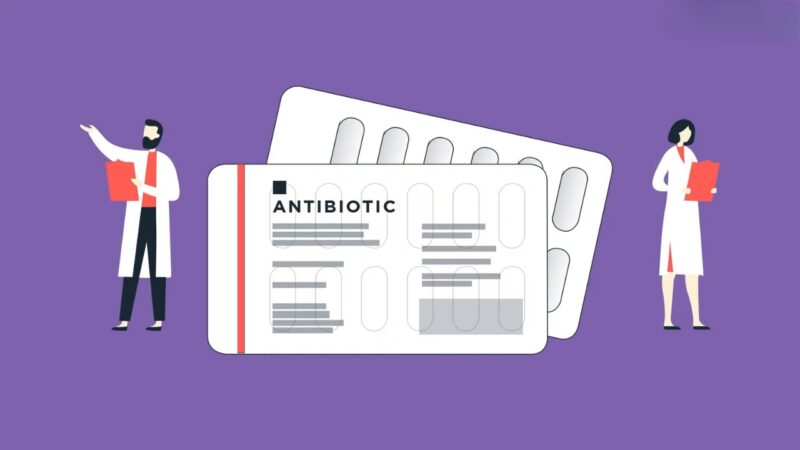Many medicines require a prescription from a healthcare professional before a patient can access them. Antibiotics, drugs that fight bacterial infections, fall into this category.
The decision to not make antibiotics available over the counter involves several critical considerations. Safety concerns, the risk of misuse, and the potential for developing antibiotic resistance are key factors.
Key Takeaways
- Antibiotics remain prescription-only to prevent misuse and safeguard public health.
- Access to antibiotics varies globally, reflecting differences in healthcare regulations and practices.
Main Reasons Why It Is Not Recommended

Antibiotics play a vital role in combating bacterial infections, saving countless lives each year. However, their availability solely through prescription raises questions and curiosity.
The restriction stems from a combination of safety considerations, public health concerns, and the effort to maintain their effectiveness for future generations. The easiest example is the case when your kid is sick. Instead of reaching to OTC medicine, a much better solution is to visit the pediatrician or a family doctor, and find out whether antibiotics might be necessary.
According to Victoria Alexander M.D., antibiotics should only be used at the recommendation of a medical doctor or other certified practitioner; educated medical professionals know what to look for as they watch for side effects, and change the patient’s treatment if the patient has a negative reaction to a specific antibiotic, or if the medication does not seem to be as effective as was anticipated.
Safety and Health Risks
Antibiotics are powerful medications that target bacterial infections. Incorrect use can lead to adverse effects, ranging from mild to severe. Key points include:
- Side Effects: Like all medications, antibiotics come with potential side effects. Without proper medical guidance, individuals may not be able to manage or even recognize these adverse reactions.
- Allergic Reactions: Some individuals may experience allergic reactions to certain antibiotics, which, in extreme cases, can be life-threatening. Prescription ensures a healthcare provider assesses the risk before administration.
Risk of Inappropriate Use
Without a clear understanding of their appropriate use, antibiotics might be misused for conditions they cannot treat, such as viral infections. This misuse includes:
- Self-Diagnosis Errors: Without medical training, individuals might incorrectly diagnose their illness, leading to unnecessary antibiotic use.
- Incorrect Dosages: Taking the wrong dose can lead to treatment failure or increased side effects. Prescriptions ensure the right dosage for the specific condition.
Antibiotic Resistance – A Global Threat
The misuse and overuse of antibiotics have led to the emergence of antibiotic-resistant bacteria. This phenomenon poses a significant threat to global health, as it makes common infections harder to treat.
- How Resistance Develops: Bacteria evolve rapidly, and misuse of antibiotics accelerates the development of resistance. When antibiotics are used unnecessarily or incorrectly, it provides bacteria with the opportunity to adapt and survive future treatments.
- The Role of Prescriptions: By requiring a prescription, healthcare providers can control the use of antibiotics, prescribing them only when necessary and with the correct regimen. This approach aims to slow down the development of resistance.
To Ensure Effective Treatment
For antibiotics to remain effective, it’s crucial to use them judiciously. A prescription requirement ensures that:
- Diagnosis is Accurate: Healthcare professionals can determine if an infection is bacterial and requires antibiotics or if it’s viral, which antibiotics cannot treat.
- Treatment is Appropriate: The right antibiotic needs to be selected for the specific type of bacterial infection. Incorrect antibiotic choice can lead to treatment failure and contribute to resistance.
Risks to Public Health
The decision to keep antibiotics prescription-only also reflects a broader concern for public health:
- Preventing Outbreaks: Controlled use helps prevent the spread of resistant bacteria in the community.
- Education on Proper Use: Interactions with healthcare providers offer an opportunity to educate patients on the importance of completing the prescribed course, even if they start feeling better, to ensure the infection is fully treated and to reduce the risk of resistance.
Steps to Responsible Antibiotic Use

In the context of antibiotic stewardship, responsible use is paramount. Key strategies include:
- Completing the Course: Patients should always complete the full antibiotic course as prescribed, even if they feel better before it’s finished.
- No Sharing or Self-Prescribing: Individuals should never share antibiotics with others or use leftover antibiotics for a different illness.
- Regular Check-Ups: Follow-up with healthcare providers ensures the effectiveness of the treatment and allows for adjustments if necessary.
7 Common Types of Antibiotics and Their Use
Antibiotics are essential tools in the fight against bacterial infections, categorized based on their mechanism of action, spectrum of activity, and chemical structure. They target various types of bacteria, treating a wide range of infections.
1. Penicillins
One of the first types discovered, penicillins are widely used to treat a variety of infections, including skin infections, throat infections, and syphilis. They work by interfering with the bacteria’s cell wall synthesis, leading to the bacteria’s death.
- Examples: Penicillin V, Amoxicillin
- Common Uses: Streptococcal infections, otitis media, pneumonia
2. Cephalosporins

Cephalosporins are a broad class of antibiotics known for their effectiveness against a wide range of bacteria. They are often used when patients are allergic to penicillin or when bacteria are resistant to other antibiotics.
- Examples: Cephalexin, Cefuroxime
- Common Uses: Urinary tract infections, skin infections, respiratory tract infections
3. Macrolides
Macrolides are effective against a broad spectrum of bacteria and are particularly useful for treating respiratory and soft tissue infections. They work by inhibiting protein synthesis within bacterial cells.
- Examples: Erythromycin, Azithromycin
- Common Uses: Pneumonia, bronchitis, some sexually transmitted infections
4. Fluoroquinolones
Fluoroquinolones are powerful antibiotics with a broad spectrum of activity. They are effective against both Gram-positive and Gram-negative bacteria and are used for more serious infections.
- Examples: Ciprofloxacin, Levofloxacin
- Common Uses: Urinary tract infections, bacterial gastroenteritis, respiratory infections
5. Tetracyclines

Tetracyclines are broad-spectrum antibiotics used to treat a wide variety of infections, including some that are transmitted by ticks, fleas, and lice.
- Examples: Doxycycline, Minocycline
- Common Uses: Lyme disease, chlamydia, acne
6. Aminoglycosides
Aminoglycosides are potent antibiotics used primarily for severe infections caused by Gram-negative bacteria. They are often administered intravenously in a hospital setting.
- Examples: Gentamicin, Tobramycin
- Common Uses: Septicemia, hospital-acquired infections
7. Sulfonamides
Sulfonamides, or sulfa drugs, are among the oldest classes of antibiotics. They are effective against a broad spectrum of bacteria by inhibiting folate synthesis, which is necessary for bacterial growth.
- Examples: Trimethoprim-sulfamethoxazole (Bactrim, Septra)
- Common Uses: Urinary tract infections, some types of pneumonia
Is This the Case All Around the World?

In many developed countries, including the United States, Canada, and most of Europe, antibiotics are strictly prescription-only medications. This policy aims to mitigate the risks of antibiotic resistance, ensure proper use, and protect public health.
However, in parts of Latin America, Africa, and Asia, regulations regarding antibiotic sales can be less stringent. In some of these regions, it’s not uncommon for antibiotics to be available without a prescription. The reasons for this vary, including limited access to healthcare services, lack of regulatory enforcement, and cultural practices.
How Difficult Is It To Obtain a Prescription?
The ease or challenge of obtaining an antibiotic prescription varies widely, influenced by geographic location, healthcare systems, and regulations on antibiotic distribution.
Different Healthcare Systems
- Public Healthcare Systems: Countries with public healthcare typically require a consultation with a general practitioner or healthcare provider for a prescription. Wait times can differ greatly.
- Private Healthcare Systems: In private settings, access might be quicker, but costs and insurance coverage are significant factors.
Telemedicine
- Telehealth Services: Advances in telehealth have simplified the process for patients to secure prescriptions, reducing the need for in-person visits and making antibiotics more accessible when justified medically.
Regulations Can Vary
- Stringent Regulations: Some nations enforce strict rules, demanding comprehensive medical evaluations before antibiotics are prescribed.
- Relaxed Regulations: Alternatively, other areas might adopt a more lenient stance, facilitating easier access to antibiotics through healthcare professionals.
FAQs
Is Garlic Stronger than Antibiotics?
Garlic has some antimicrobial properties, but it is not stronger than antibiotics. Antibiotics are specific for the type of bacteria they treat and can kill or stop their growth. Garlic may help prevent some infections, but it cannot replace antibiotics for serious or resistant infections.
Can Antibiotics Do More Harm than Good?
Antibiotics can be very effective and lifesaving when used appropriately, but they can also cause harm if used incorrectly or unnecessarily. Some of the possible harms of antibiotics include allergic reactions, side effects, drug interactions, and antibiotic resistance. Antibiotic resistance is a serious global threat that makes some infections harder or impossible to treat.
Is It Ok to Take Antibiotics Once a Year?
There is no definitive answer to how often you can take antibiotics, as it depends on the type and severity of the infection, the antibiotic prescribed, and your medical history.
However, you should only take antibiotics when they are prescribed by a doctor and follow the instructions carefully. Taking antibiotics too often or for the wrong reasons can increase the risk of antibiotic resistance and reduce their effectiveness.
What Is the Closest Thing to Amoxicillin Over the Counter?

Amoxicillin is a prescription antibiotic that belongs to the penicillin class. There is no over-the-counter equivalent or alternative to amoxicillin.
If you have an infection that requires amoxicillin, you need to see a doctor and get a prescription. Do not self-medicate with other drugs or supplements that claim to have similar effects, as they may be ineffective, unsafe, or illegal.
Last Words
Antibiotics, critical in treating bacterial infections, require careful regulation through prescription-only access. This policy aims to prevent misuse and the development of antibiotic resistance, ensuring these medications remain effective for future needs. Variations in access and regulation globally underscore the importance of universal guidelines and education on antibiotic use.
